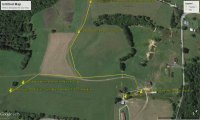crazyfarmermm
New Member
Hello guys, I am looking for a little advice or to find out if I am crazy. I am a farmer who is trying to clean my act up a little, begin rotational grazing, and limit animal access to stream water. This may take some time and will likely be a several step process. I currently have a nice freshwater spring that was formerly used to provide water to 2 houses and no longer in use. It currently has a 1,000 gallon water storage tank buried underground that gravity feeds from the spring. At this location I have easy access to electricity. My ideas are to use another water storage tank with a deep well pump and floats for protection. Am I crazy? Would I need a pressure tank? At peak I think I will pump 900 gallons per day. I am sure you may need more information. Please help me think this through, thank you.

